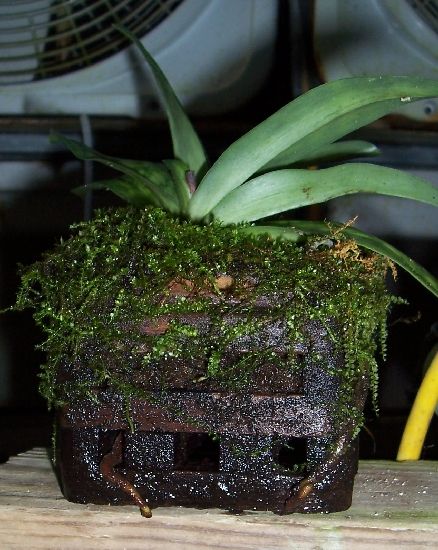ChrisFL
General Disarray

Here's a barbata to cover another subgenera. This one has done great as have most of the barbata types. But I do have some stall or show stress, and find that sometimes the roots are poor. So I pull out the old moss and increase the percentage of gravel when I do so.
This may be the clincher.
I checked water chemistry of water I was able to squeeze out of old (1+ year) and new (2 day) moss. And for comparison I have the chemistry of my basic irrigation water.
Irrigation water pH = 7.43, conductivity = 65, hardness = 28, alkalinity = 32
New moss pH = 5.68, conductivity = 299, hardness = 19.2, alkalinity = 22
old moss pH = 7.33, conductivity = 1800!!, hardness = 419!!, alkalinity = 190
With a hardness of 400 and a conductivity of 1800 there must be additional accumulation of potassium and sodium salts to get the conductivity that high. My full strength well water has a hardness of around 400 with a conductivity of 650 to 800. Most of the TDS is from calcium sulfate with the balance calcium and magnesium carbonates. Only 3 mg/L of sodium and potassium was nondetect. So to pick up more than 1000 useimens of conductivity there must be a bunch of monovalent cation in there somewhere.
Contrary to convention, the acidity is not going up with age, but the amount of sequestered salts is pretty amazing. Maybe one of the scary things is that if the moss is sequestering basic salts, its probably sequestering the trace metals to toxic levels too.
A commonality of the plants that are doing good vs the not so good, is the roots coming out of the moss and fully exposed. At that point they can access low salt low micronutrient water I guess.
Sorry if this has been covered already Rick, but your it appears you're actually sequestering alkalinity/buffer. An alkalinity of 22 to 190 is a HUGE change and denotes sequestration/retention/presence of proton up-taking ions. But, obviously, these need counter ions, and without a trace metal analysis, we can't know what they are, but you can make an assumption that they are whatever is in the fertilizer.



